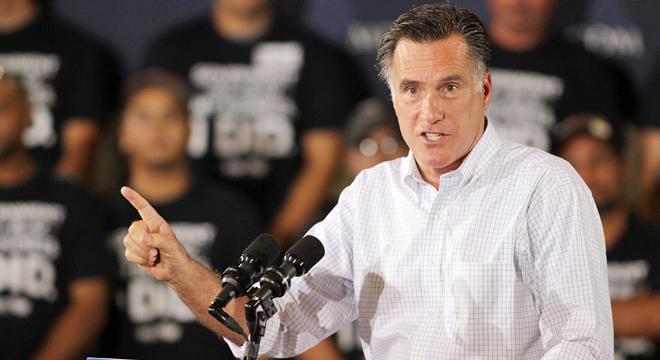GOP presidential hopeful Mitt Romney says that by the end of his second term in 2020, the North American continent can free itself from reliance on foreign energy sources.
The proposal has experts scratching their heads for a few reasons. One predictable objection is that, as a global commodity, it’s not really feasible to be independent of foreign oil. The concept of independence is illusory, and the goal of little value, unless North America excised itself from the global market.
Another is that it’s a rhetorical tweak to more common paeans to the virtues of American energy independence. It’s an implied acknowledgement that Romney’s less interested in efficiency and alternative energy than in drilling for more oil and gas, and that the United States doesn’t sit on enough oil and natural gas to provide for the country’s energy needs.
But above and beyond that, history indicates Romney’s setting himself up for failure.
The above graph, courtesy of data from the Energy Information Administration, reflects the country’s dependence on foreign oil — effectively petroleum imports as a percentage of petroleum consumed.
Each of the last eight presidents has touted the goal of energy independence — a proxy for independence from foreign oil. Presidents Richard Nixon, Gerald Ford, and Jimmy Carter each set Apollo-like deadlines for energy independence. Each of them set the deadline well into the future, meaning their own presidencies couldn’t easily be judged by the country’s success or failure to meet the goal.
Ronald Reagan softened both the objective itself and rules implemented by his predecessors designed to curb dependency on oil. He, too, said that, “While conservation is worthy in itself, the best answer is to try to make us independent of outside sources to the greatest extent possible for our energy.” But he effectively nixed the national deadline.
According to Lisa Margonelli, an energy expert at the New America Foundation, future presidents followed Reagan’s lead and set less ambitious or more futuristic sounding goals. “That is why Romney’s 2020 [goal] is a non-sequitur,” she notes.
Bill Clinton and Al Gore promised Americans would eventually drive 100 mile-per-gallon super cars, and in his 2003 State of the Union address, George W. Bush predicted children born that year would be able to drive hydrogen-powered cars when they turned 16. Obama’s goal is to reduce oil imports by one-third by 2025. By contrast, though it’s largely a rhetorical trick to disguise an energy strategy that relies heavily on drilling, Romney’s goal is one he’d have to explain away if and when he failed to achieve it.







